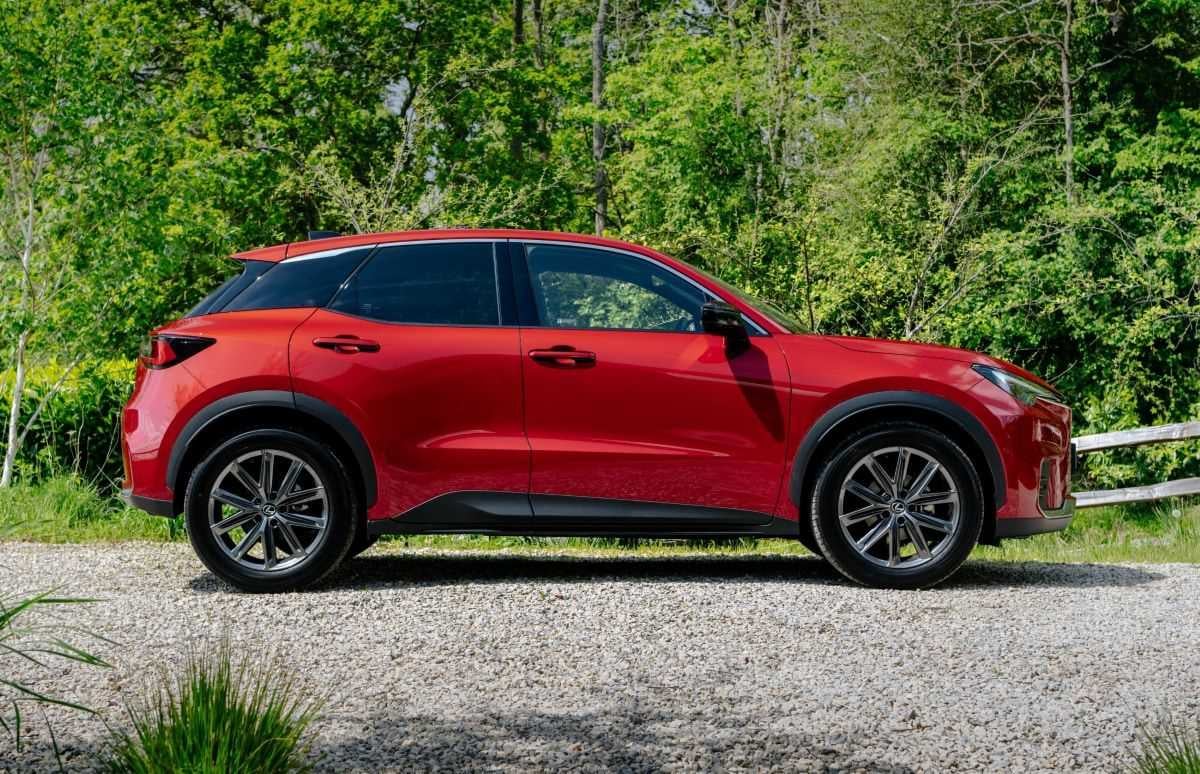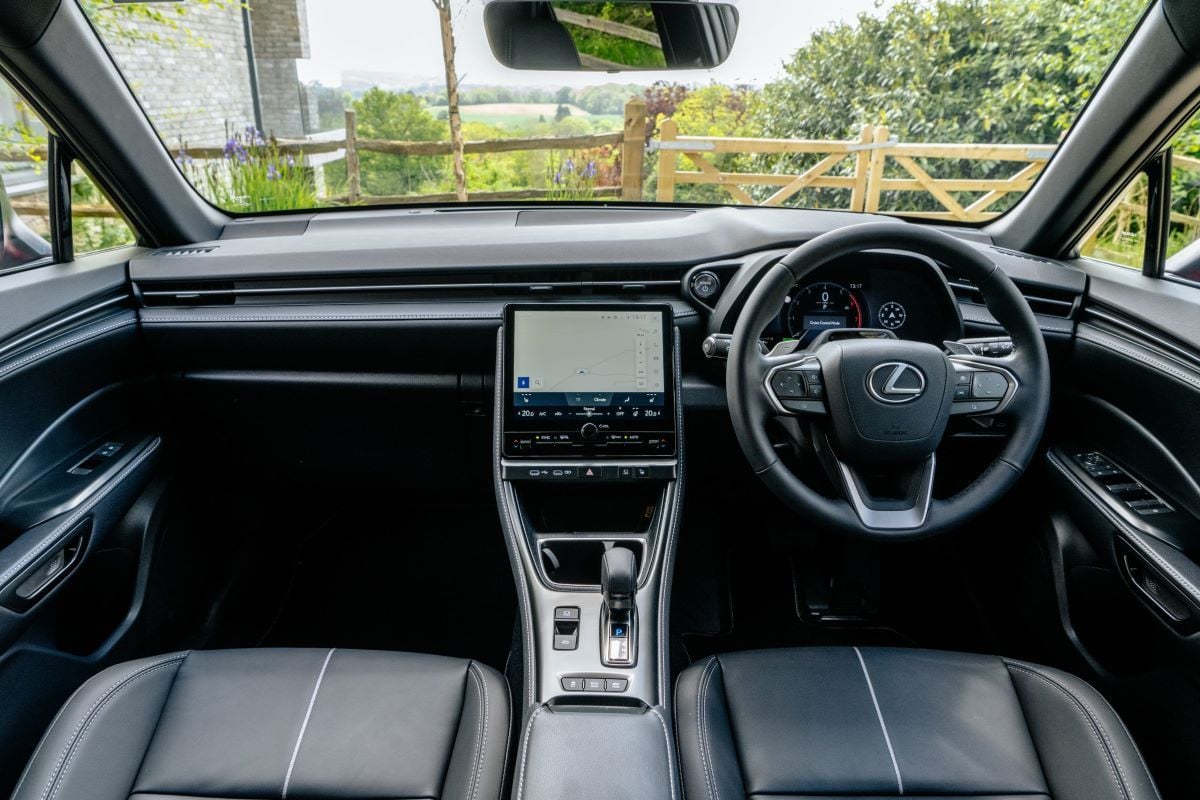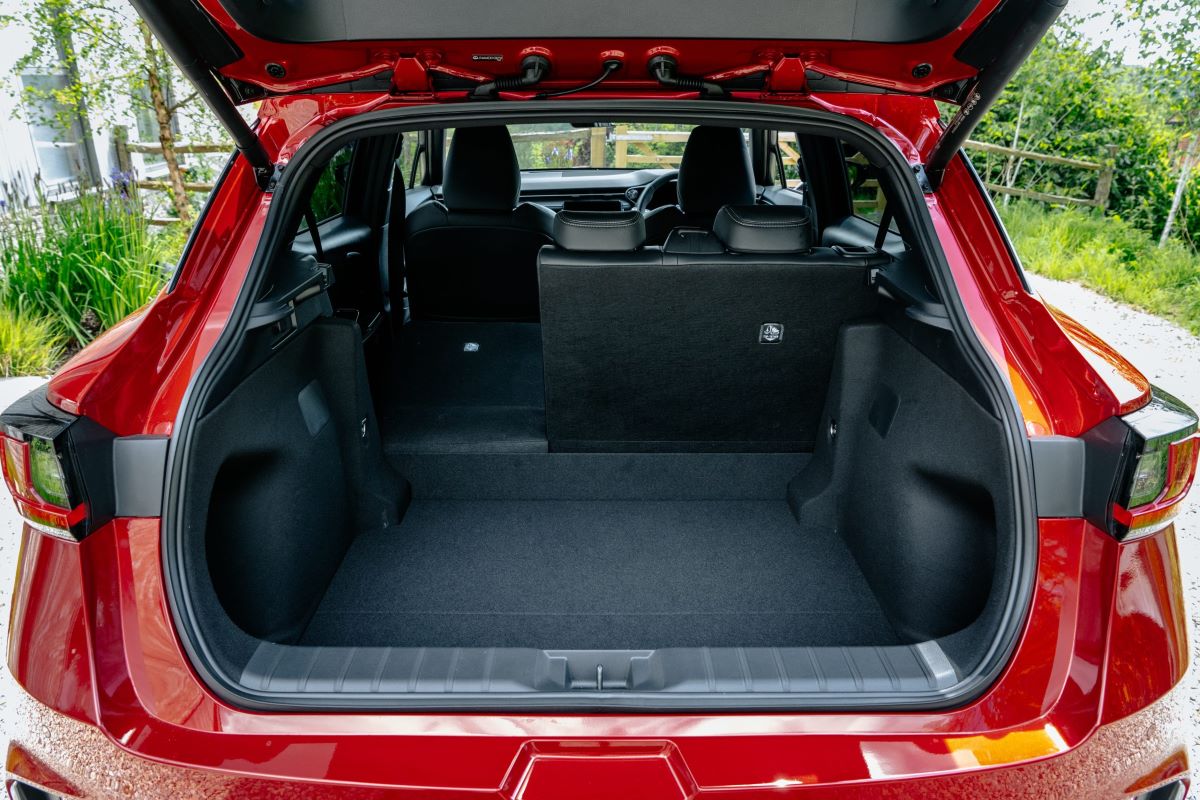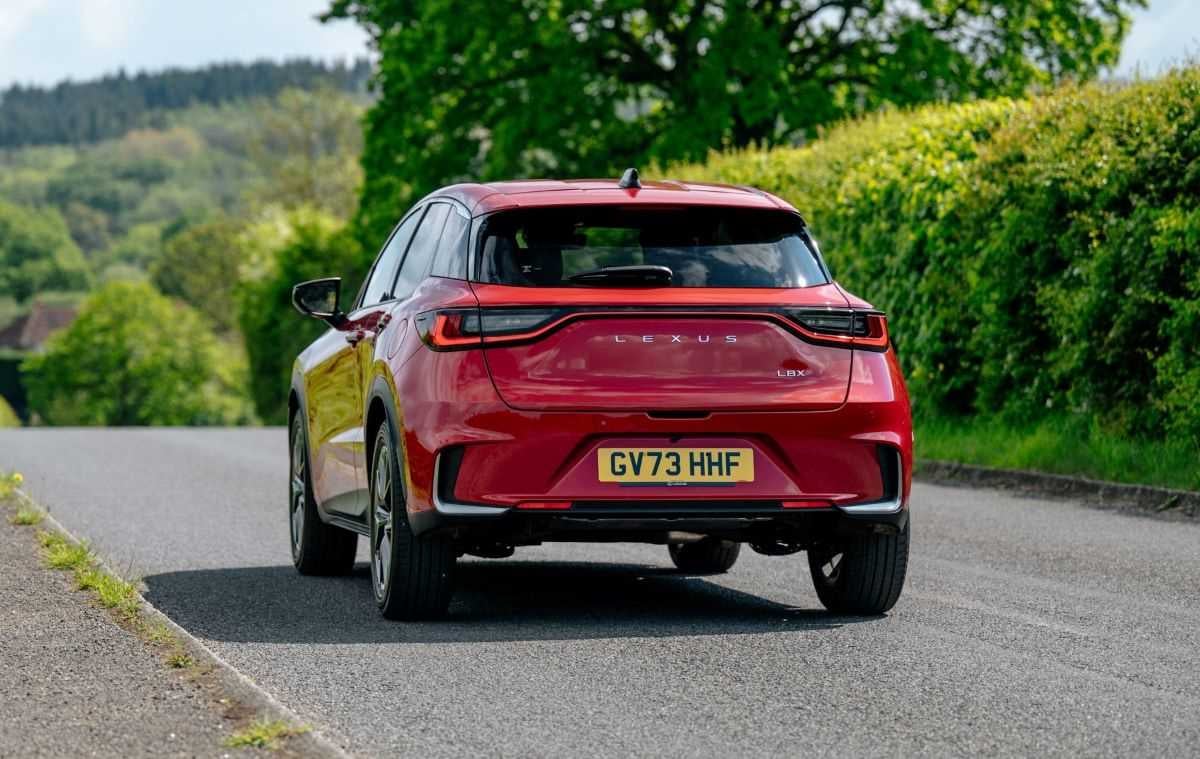
Cheaper than AA or we’ll beat by 20%^
• Roadside cover from £5.49 a month*
• We get to most breakdowns in 60 mins or less
• Our patrols fix 4/5 breakdowns on the spot

The Lexus LBX is a quirky new compact hybrid SUV with a premium air. But can it stand out in a crowded market? Lawrence Allan gets behind the wheel to find out.
Things you'll like
- Classy, high quality cabin
- Very efficient
- Smooth and easy to drive
Things to consider
- Cabin space is tight
- Gets expensive in higher trims
- Slightly firm ride
What is the Lexus LBX?
Do you find the array of different two-letter model names Lexus uses a bit confusing? You’re probably not the only one. So, here’s one with three letters: the all-new Lexus LBX.
The LBX isn’t just another posh SUV targeting BMW, Mercedes-Benz and Audi: it’s something a little more left field. LBX stands for Lexus Breakthrough Crossover, and the fact it’s the first three-letter model name since the crazy LFA supercar speaks volumes.
Unlike most SUVs, for example, the LBX is small – noticeably smaller than a Range Rover Evoque, BMW X1 or Mercedes-Benz GLA, for example. It’s actually the same size as the supermini-based Toyota Yaris Cross and shares that car’s basic platform underneath.
Don’t go assuming this is a rebadged Toyota with a bit of ‘luxury’ tinsel to justify the price bump: the LBX has totally different styling, a unique cabin design and plenty of changes under-the-skin.
It’s a fully-fledged luxury SUV, Lexus reckons, just one that’s a lot more compact and more suited to city streets. Does it deliver on this promise? We’ll find out in this review.
Verdict: is the Lexus LBX a good car?
Before the Lexus LBX, your choices of truly luxurious small cars were very limited, and we reckon this new addition is a very worthy offering. Yes, it can get expensive given its size, and cabin practicality isn’t great, but otherwise the LBX does a convincing job of feeling luxurious while also being affordable to run and decent to drive.
Pricing, specs & rivals
Naturally, the smallest Lexus on sale is also the cheapest, with the Lexus LBX starting at just under £31,000 at the time of writing (February 2025). That’s ever so slightly more than the starting price of an Audi Q2, but a bit cheaper than a Volvo EX30.
That base price gets you entry-level Urban trim, which comes with LED headlights, 17-inch alloys, a 9.8-inch touchscreen, digital dials, dual-zone climate control, all-round parking sensors, a reversing camera, electric folding mirrors and keyless start.
To get the proper Lexus experience we’d recommend at least Premium spec (£33,425), which brings privacy glass, heated front seats, auto wipes, power lumbar support for the driver’s seat, wireless phone charging, ambient lighting, faux leather trim and extra driver assist tech.

Premium Plus is our pick of the range. Priced at £35,425, it gets a larger digital dial display with a head-up display, an electric tailgate, keyless entry, 18-inch alloys and a clever cabin air purification system.
Premium Plus Design adds machine finished alloys, perforated faux leather with red stitching and two-tone exterior paint for another £1,000, but the real luxuries come with Takumi trim.
Priced at £39,175, Takumi gets full leather, an electric memory driver’s seat, adaptive LED lights, a heated steering wheel, intelligent park assist, 50-colour ambient lighting, acoustic glass, a Mark Levinson sound system, a 360-degree camera system and a digital key subscription.
Takumi Design adds Ultrasuede cabin inserts, machined alloys and two-tone paint for another £1000. Four-wheel drive is only available on the two top Takumi trims and adds £1,300 to the list price.
Rivals
There’s no shortage of premium SUVs out there to choose from, but few are quite as small as the Lexus LBX. There’s the Volvo EX30, which is an EV, or the even smaller Jeep Avenger and Fiat 600 that are considerably less upmarket. Really, the closest alternative to the Lexus is the Audi Q2, which is certainly getting on a bit and won't be in showrooms much longer.
If you don’t mind something a bit less easy to park, then slightly larger alternatives such as the MINI Countryman, Range Rover Evoque, Mercedes-Benz GLA and Volvo XC40 are well worth a look in.
Lexus LBX: Interior comfort, quality & technology
We won’t beat around the bush here: in terms of quality and premium ambience, the Lexus LBX is leagues ahead of any small SUV out there – even the Audi Q2.
This starts as soon as you enter the cabin, with Lexus opting for electric door releases but keeping a simple physical door handle for a tactile feel. The door also closes with the sort of solid feeling thunk you’d experience on larger, more expensive Lexus models.
One inside the sense of luxury continues, with expensive-feeling soft-touch finishes all over the doors, dash and centre console. Although Urban trim misses out on the plushest synthetic or real leather finishes and comes with cloth seats, it still gets fabric inserts throughout. Even the stalks feel like expensive items. Overall it’s a huge step up from the rather plasticky Toyota Yaris Cross.
We also like that Lexus has retained physical controls for most of the climate controls and even things like the instrument brightness, making them much easier to operate when on the move than many rivals.
In terms of the driving position, there are limitations in legroom for those well over six foot, but otherwise it’s very comfortable, with plenty of adjustment in the seats and steering wheel. You sit a bit higher than you would in a hatchback (but not massively so) and forward visibility is good – although rear visibility is a bit limited.

Infotainment, sat-nav, stereo and connectivity
Every version of the LBX comes fitted with the same 9.8-inch, portrait-angled touchscreen infotainment system mounted centrally on the dash. Although not directly within the driver’s line of sight, it’s easy to operate with clear graphics, good responses and chunky icons.
The interface is good enough by itself, but you get wireless Apple CarPlay and (disappointingly wired) Android Auto as standard. There’s also a full three USB-C sockets up front, along with two in the rear for charging devices. Opting for Premium trim also brings a wireless phone charging pad.
The entry-level two trims make do with a seven-inch digital dial display, which is basic but functional. We prefer the full 12.3-inch display offered on Premium Plus trims and above, which also brings a handy head-up display to project key info within your sight line on the windscreen. The dials themselves are clear and have some customisation.
Most trims come fitted with a six-speaker sound system that delivers acceptable sound quality. However, a 13-speaker Mark Levinson is fitted on Takumi trims – Lexus has a long-standing relationship with the brand and usually produces excellent audio quality.
How practical is the Lexus LBX
The limitations of the Lexus LBX’s size are evident as soon as you step inside. With dimensions of 4.19m in length, 1.82m in width and 1.56m in height, the Lexus is fractionally lower and wider than the Yaris Cross on which it’s based, but not by much.
We’re not saying the LBX is desperately impractical, but it’s unusual to climb aboard a plush, Lexus-like cabin and then find a narrow centre console and a feeling of snugness, even in the front. Headroom isn’t an issue by any means, but drivers over six foot will find the seat needs to be set all the way back on its runners for ample legroom.
Things are worse in the rear. If you do have a six foot-plus driver it’s likely only smaller adults will be comfortable behind for anything except a short journey. Four average sized adults will be okay, even if both head and legroom are anything but generous, but five would be a real squeeze.
It’s roomier in the rear than the cramped Jeep Avenger, but about on a par with the Volvo EX30, while an Audi Q2 is more generously proportioned for all occupants.
Storage and boot space
The LBX isn’t great for carrying passengers, and neither is there a huge amount of storage space. While the glovebox is an okay size the door bins are quire small, and you only get a single cupholder in front of the gearlever (with a small space for a chocolate bar or two next to it).
Still, you do get a second cupholder beneath the armrest as well as a bit of storage, plus a cubby beneath the dashboard itself – drivers will find this tricky to access without levering their legs out the way. In the back storage is limited – you get small door bins, a single pocket on the front passenger’s seatback and, disappointingly, no fold-down armrest.
The boot is more useful, however, with 402 litres of capacity in front-wheel drive models. That’s about the same as the Audi Q2, while the space itself is well-shaped. It’s a shame there’s no height adjustable boot floor, though, so you get a high load lip.

It’s odd, too, that you get 40/20/40 folding rear seatbacks in most variants of the Yaris Cross, but only a 60/40 split in the LBX. However, many small SUVs are in the same boat.
It’s also worth noting that if you opt for a four-wheel drive LBX, you lose around 20% of the load capacity, down to just 317 litres in total.
Performance & drive: What is the Lexus LBX like on the road?
Lexus gives you plenty of trim levels to choose from with the LBX, but as for the engine? You get one hybrid powertrain, and that’s your lot.
Thankfully, it’s a good hybrid powertrain: Toyota’s tried-and-tested full hybrid tech using a 1.5-litre non-turbo three-cylinder engine mated to two electric motors and a planetary gearset (effectively a CVT). Regenerative braking combines with the engine to top up a small battery pack.
Although basically the same system as you’ll find in the Yaris Cross, there’s a few key differences to give the LBX a more upmarket driving experience.
For starters, there’s a little more power from the electric motor, and a 25% larger battery (although at 1kWh, it’s hardly vast). The LBX also gets a balancer shaft and extra sound deadening to reduce noise, vibration and harshness (NVH).
The result is 136hp and a 0-62mph time of 9.2 seconds – hardly adrenaline-pumping performance, but as the LBX isn’t a heavy car it feels perfectly strong in any typical road situation and is noticeably more responsive than a Yaris Cross. Only when the battery has been fully drained – for example if you’ve kept it in electric-only mode for a sustained period – does performance falter a bit.
This being a Lexus, smoothness matters more. When pottering about a below 30mph the LBX feels more like an EV in its power delivery, and when the engine does kick in it works with the gearbox to remain commendably hushed and effortless. It’s a very relaxing way to travel – just not a particularly thrilling one.
Unlike the Yaris Cross, Lexus gives you the option of adding all-wheel drive to the LBX via a small electric motor powering the rear wheels. With it fitted the 0-62mph time increases to 9.6 seconds, but otherwise it feels the same in practice.
Power, 0-62mph times
- LBX 2WD: 136hp / 9.2 seconds
- LBX 4WD: 136hp/ 9.6 seconds
Ride and handling
The LBX balances ride comfort and handling pretty well, even if it isn’t as plush riding as more expensive Lexus models.
The suspension has been revised to improve bump absorption over the Yaris Cross, and it does a pretty good job of tackling sharp potholes and speed bumps, although there’s a firmer edge to the ride than you might expect from a Lexus.
Out of town, though, the LBX is very well controlled, with no excessive body movements, plenty of grip and steering that feels precise and naturally weighted. Don’t get us wrong, you’ll have more fun in a Ford Puma in the bends, but for a small luxury car the Lexus is easily as good as it needs to be.
With no shortage of grip in front-wheel drive from the all-wheel drive LBX is unlikely to be transformative in normal road driving. But when confronted with snow, ice and muddy tracks, expect it to come into its own. The LBX certainly doesn’t have the ground clearance for proper off-roading, however.
Noise and refinement
On the whole the Lexus LBX is an impressively smooth and quiet small SUV. This is particularly the case in town when the engine is off and it can creep about silently under electric power.
When the engine does fire up, however, it’s a gentle hum rather than a racket – even under hard acceleration it’s not an intrusive unit. The lack of discernible gearshifts also improves the effortless feel.
Extra soundproofing over the Toyota Yaris Cross makes the LBX a more calming motorway companion. That said, you do notice a little more wind rustle and road more than you might in, say, a Range Rover Evoque.

Euro NCAP: is the Lexus LBX a safe car?
The Lexus LBX put in a good showing in Euro NCAP crash tests, receiving the maximum five-star rating, although rivals like the MINI Countryman are fractionally ahead for occupant pedestrian protection category scores.
Overall, though, the Lexus is a very safe car to transport your loved ones. Standard kit includes the expected automatic emergency braking, lane keep assist and traffic-sign recognition, along with adaptive cruise control and automatic high beam across the range.
You also get rear cross-traffic alert, safe exit assist and blind-spot monitoring on Premium trim and above, while an adaptive beam headlight system, front cross-traffic alert, lane change assist and a 360-degree camera system are added on Takumi models.
Fuel economy and running costs
One of the most appealing factors of compact and lightweight SUVs such as the LBX is low running costs. And with hybrid power across the range, the Lexus has many of its conventionally-powered rivals licked for fuel economy.
Go for the front-wheel drive model and, in official WLTP tests, the LBX managed up to 62.7mpg (reduced fractionally with bigger wheel options) combined. That drops to 58.8mpg if you opt for four-wheel drive, which is a small sacrifice given no 4x4 that isn’t a plug-in hybrid or a diesel can get close to that figure.
By comparison, even a diesel, two-wheel drive Audi Q2 manages 58.9mpg on the same test regime, while the most efficient MINI Countryman manages 50.4mpg.
One of the main reasons to avoid going for high-spec Takumi Design or four-wheel drive models is these creep over the £40,000 barrier where you’ll pay £410 a year in tax for five years for the ‘premium car tax’.
The LBX makes less sense than plug-in hybrid or electric alternatives when it comes to company car tax, however. Front-wheel drive versions sit in the 26% Benefit-in-Kind tax bands, with four-wheel drive models in the 27% band, whereas a Volvo EX30 is just 2%.
How much does the Lexus LBX cost to insure?
The Lexus LBX looks to be considerably more expensive to insure than the Yaris Cross on which it’s based, if the car’s insurance groups are anything to go by. The entry-level Urban model starts in group 23 compared to the base Yaris Cross’s group 11, although the LBX’s groups only increase to 25 for top trims.
Although that seems high, it’s about the same as premium rivals such as the MINI Countryman and higher-spec versions of the Audi Q2.
Lexus LBX FAQs
How much does the Lexus LBX cost?
Prices for the Lexus LBX start from just under £31,000 for the Urban version, rising through several trim levels until you get to the flagship Takumi Design at over £40,000.
Is the Lexus LBX the same as the Yaris Cross?
The LBX isn’t the same as the Yaris Cross, but it is closely related under the skin. The LBX sits on the same platform and has a more powerful version of the Yaris Cross’s hybrid system, but it has different styling and a more luxurious interior.
Is the Lexus LBX a plug-in hybrid?
The Lexus LBX is not available as a plug-in hybrid, only as a series hybrid or ‘self-charging’ hybrid as it’s sometimes known. The small battery is charged up by the engine or regenerative braking rather than plugging it in.












